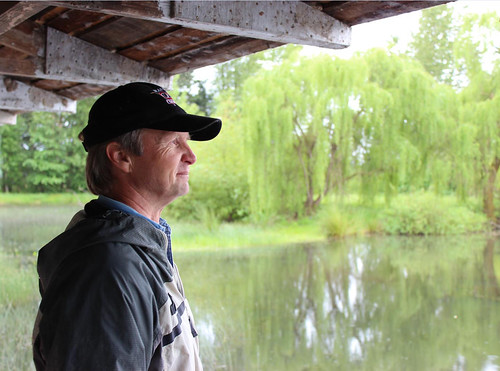
Through conservation easements, people like Dave Budeau are able to protect and restore important landscapes, like wetlands, grasslands and farmlands.
Budeau wanted to restore and protect a wetland. When the wildlife biologist searched for a new home in 2003, his passion for wildlife and nature led him to purchase what may have seemed to some as an unfriendly plot of land for wildlife. But a conservation program helped him change that.
The recently passed 2014 Farm Bill continues to provide financial and technical assistance for farmers, ranchers and forest landowners wanting to put their land into easements. But rather than separate programs, the major easement programs offered by USDA’s Natural Resources Conservation Service have been bundled into one – the Agricultural Conservation Easement Program, or ACEP. One additional easement program, the Healthy Forests Reserve Program, remains separate.
ACEP streamlines the conservation easement options into two primary components: a working lands component where NRCS provides assistance to partners with farmland protection programs to purchase agricultural land easements, and a wetlands reserve component where NRCS works directly with the landowner, like Budeau, to restore and protect their agricultural wetlands.
The pasture in Marion County, Ore., that caught Budeau’s eye was dominated by one species of plant, bentgrass. Bentgrass can be invasive in the state’s wetlands, but Budeau knew the land could be transformed from a one-species landscape, or monoculture, to a wetland haven that gives sanctuary to a variety of wildlife, including a threatened Oregon fish.
“I saw signs of tufted hairgrass and other wetland indicators growing, and I knew this was the place,” Budeau said.
Tufted hairgrass thrives in moist soil and provides cover to small mammals, song birds and waterfowl.
After learning about conservation easement programs from his local NRCS district conservationist, Budeau decided to enroll 30 acres into the former Wetlands Reserve Program, one of the three programs now combined under ACEP. The other two are the Grassland Reserve Program and Farm and Ranchland Protection Program.
Conservation easements enable landowners to voluntarily restore and protect wetland ecosystems. Landowners may select either a permanent or 30-year easement while retaining ownership of the land. In the past 20 years, more than 2.6 million acres of wetlands have been restored through conservation easements.
Through the easement program, Budeau began restoring the wetlands in 2008, converting an existing pond and other low-lying areas into wetlands.
“Wetlands are home to so many species,” said Les Bachelor, NRCS district conservationist in Salem, Ore. “We need to make sure that wildlife has a place to live.”
The restoration work created the ideal habitat for the Oregon chub, which was listed as endangered at the time. Budeau wanted his land to serve as a sanctuary for them. Loss of key wetland habitat had pushed the chub to the brink of extinction.
Scientists with NRCS and U.S. Fish and Wildlife Service monitored the depth and temperature of Budeau’s ponds for two years to ensure they provided suitable habitat before introducing 623 chub in 2010. By May 2012, more than 10,000 chub lived in the ponds.
Wetlands like the ones on Budeau’s property are integral to the increasing chub population. Since 2010, the Oregon chub has joined more than a dozen other species that were downlisted from endangered to threatened.
Chub isn’t the only success linked directly to Budeau’s property. Plant and wildlife diversity is steadily increasing. “Every year it seems like a new bird shows up,” Budeau said. “I’ve also seen red-legged frogs, long-toed salamanders and amazing invertebrate diversity.”
Budeau is excited with how the conservation easement with NRCS has led to so much success.
“This is the (conservation) easement we all dreamed of,” Budeau said. “It turned out as good as I could have ever expected.”
To get started with NRCS, visit your local USDA Service Center or www.nrcs.usda.gov/GetStarted.

